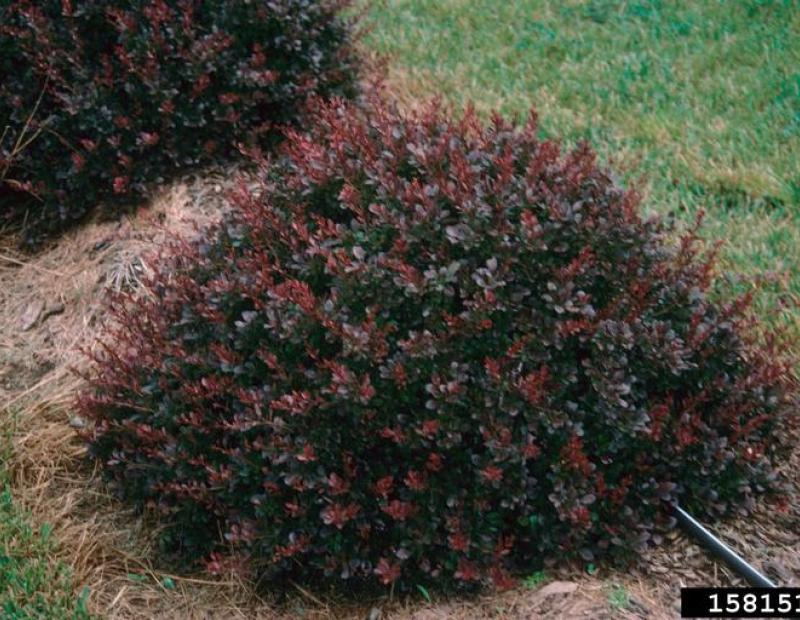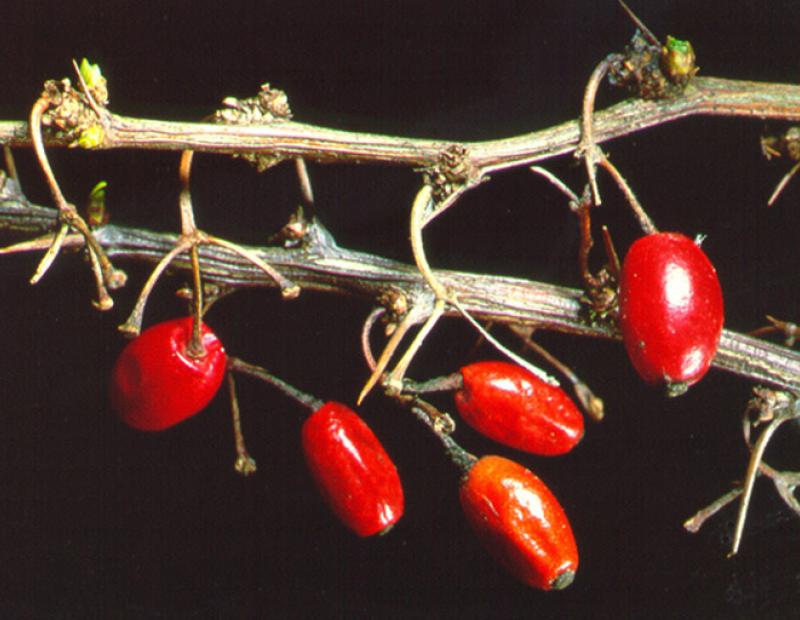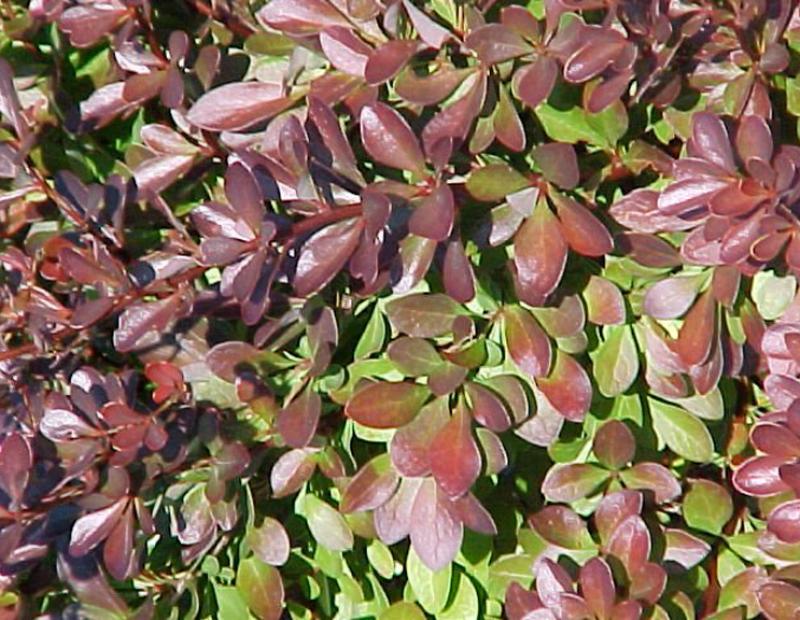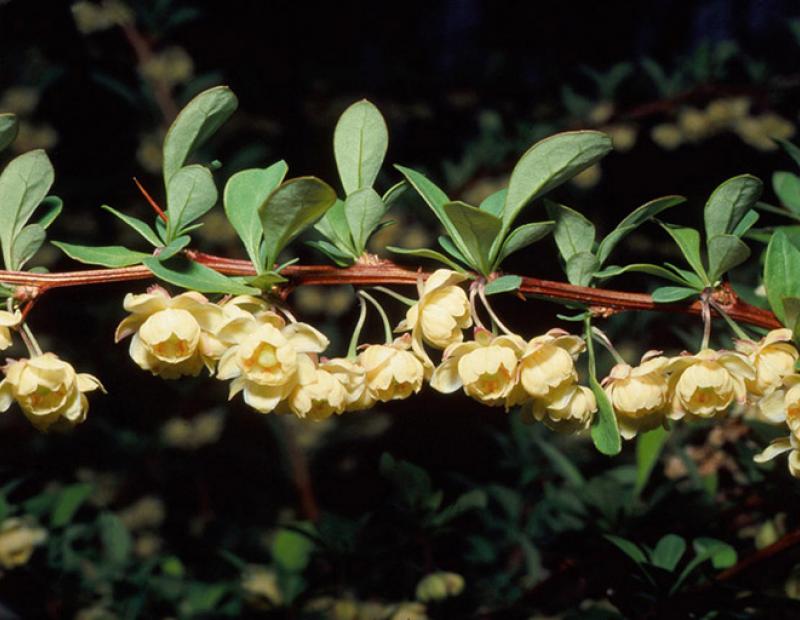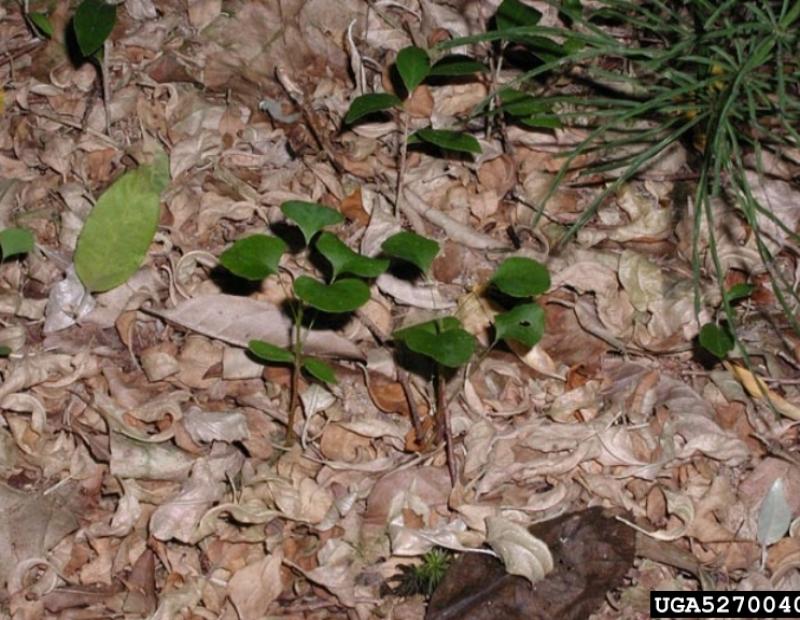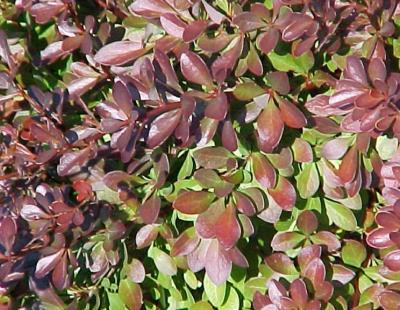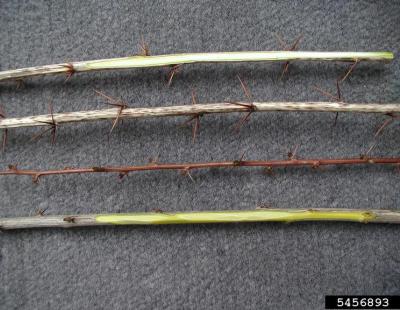- Terrestrial Plants
- Shrub or woody bush
Japanese barberry establishes itself in dense stands, frequently shading out native plants. These plants pose a threat to native ecosytems by altering soil pH, nitrogen levels, and biological activity that occurs in the soil. By making soil more basic, Japanese barberry often facilitate an increase in invasive earthworms. Documentation has also indicated white-tailed deer and other native animals prefer to graze on native plants over Japanese barberry, giving them a competitive advantage.
These plants occupy a wide range of habitats and are both shade tolerant and drought resistant. These plants produce a large number of seeds that have a high germination rate. Native birds assist in the spread of Japanese barberry by ingesting the berries and further distributing them to new locations.
Japanese barberry is a hardy, ornamental shrub that is native to Japan. It was introduced to the United States in 1875. Settlers used these shrubs as an alternative to common barberry, and planted them in hedgerows to border fields. The Japanese barberry fruit was also found useful for dyes and jams, making this a further incentive to cultivate these shrubs. Although prohibited in New York, Japanese barberry are still being planted today, which poses an issue with managing them successfully.
Berberis thunbergii is a compact, spiny shrub, that on average grows between .6 and .9 meters tall. The roots of the plant are shallow but are very tough. The shape of the smooth-edged leaves vary between oval to spatulate, and are clustered in tight groups close to the branch. Individual spines bear small leaves in their axils. During May, these plants bloom with small yellow flowers in small clusters of two to four, or individually. The vibrant red fruits mature in mid-Summer and persist through winter.
It is widespread throughout the Lower Hudson region and found in a wide variety of habitats including abandoned farm fields, deciduous forest, and disturbed areas. It is well adapted to thrive in many soil and shade conditions, allowing it to out-compete many native plants. Japanese barberry is a New York prohibited plant and may not be sold, imported, purchased, transported, introduced or propagated in the state.

